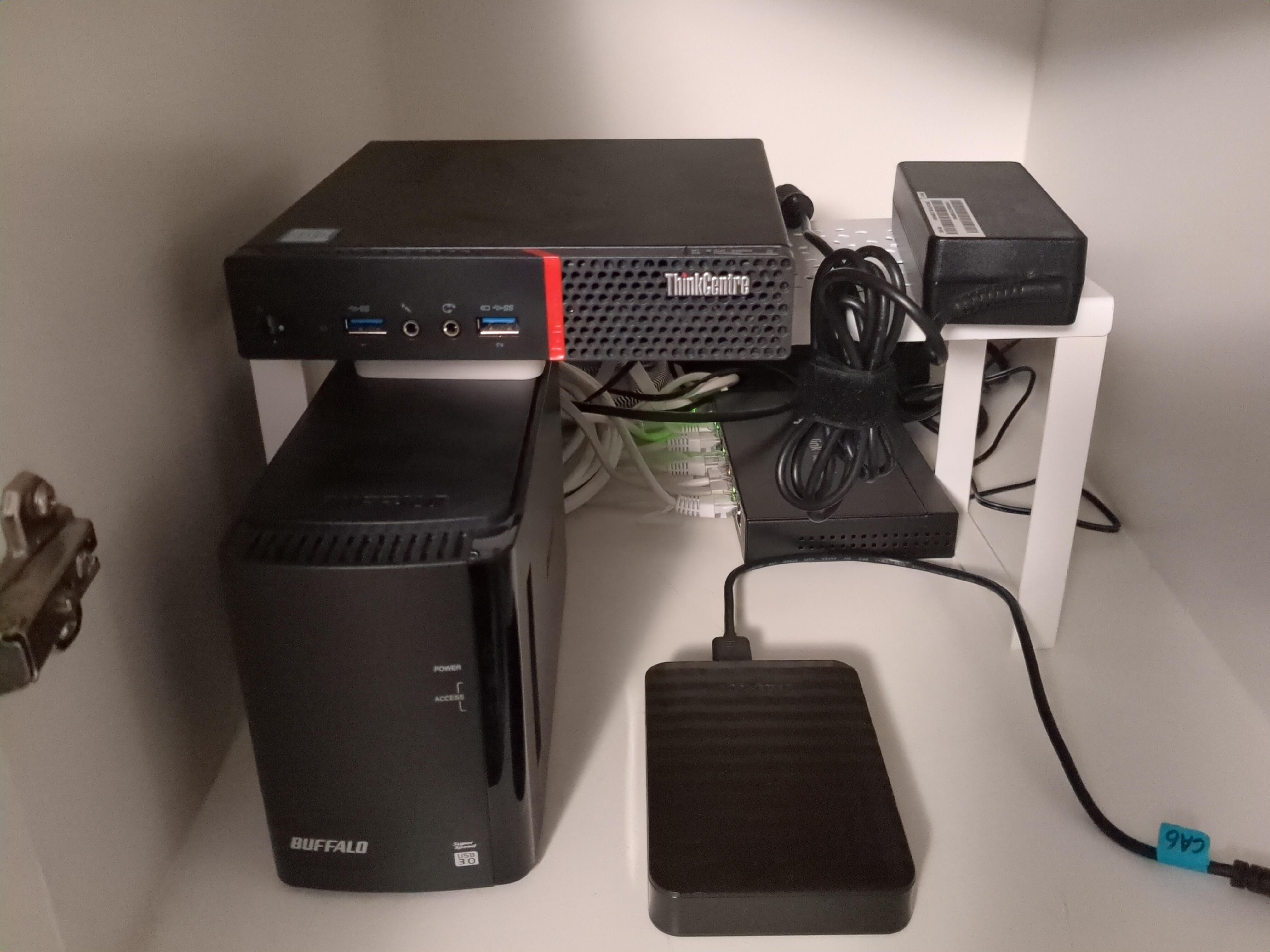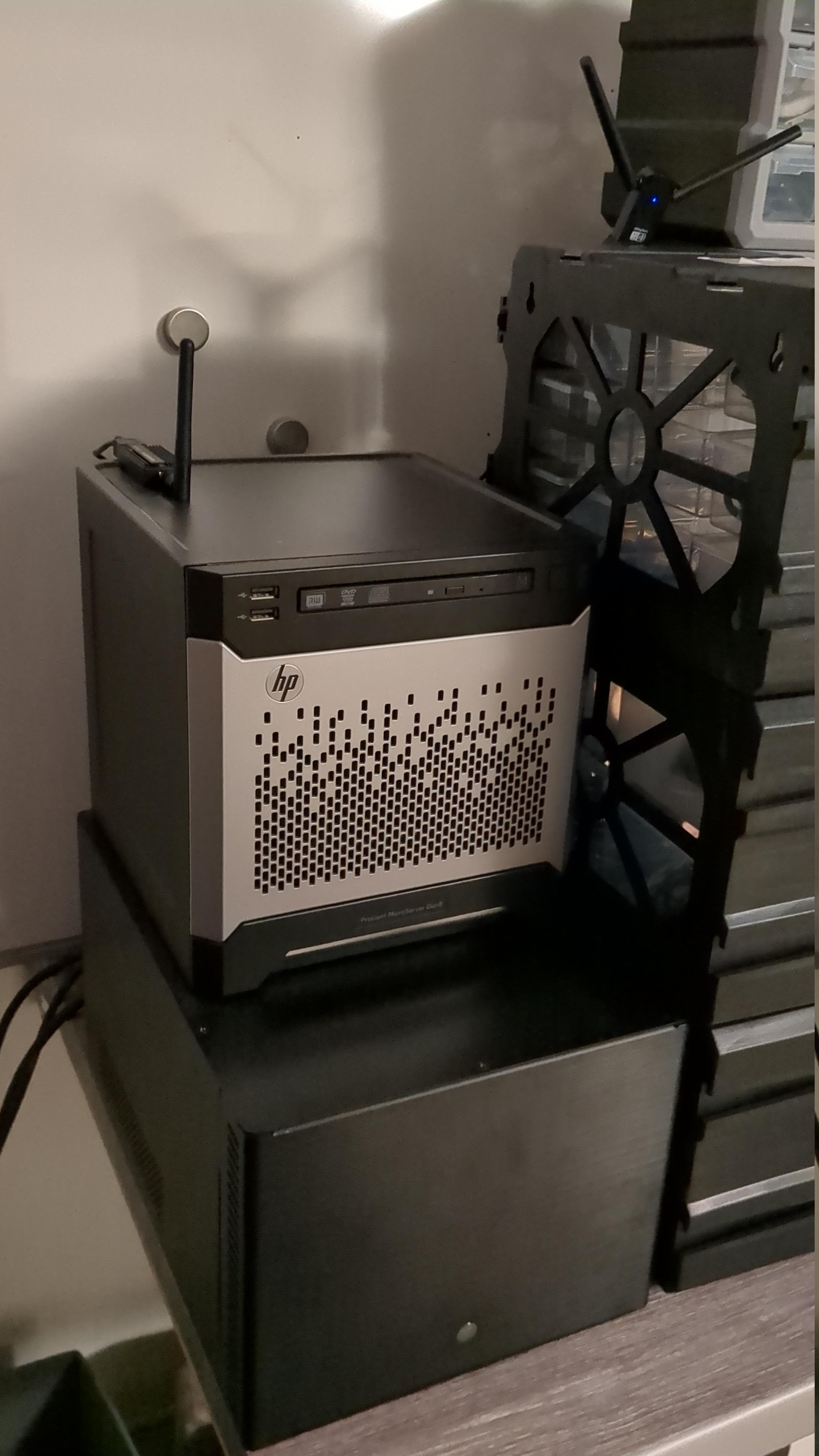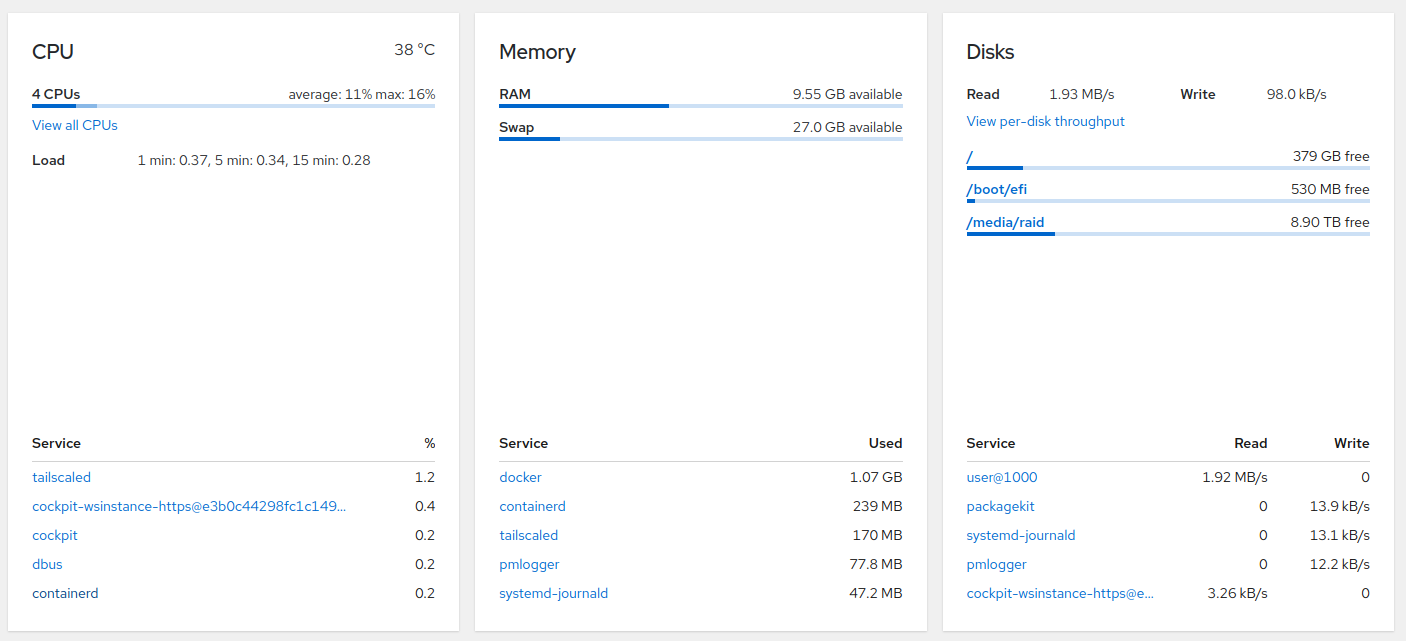I think I have the same motherboard, it’s the ASUS N100I-D D4, right?
I joined Lemmy back in 2020 and have been using it as qaz@lemmy.ml until somewhere in 2023 when I switched to lemmy.world. I’m interested in Linux, FOSS, and several other subjects.
- 16 Posts
- 160 Comments

 2·4 days ago
2·4 days agoI tried Baserow a while ago but decided not to use it because it started downloading the application after running the container and required an online account (that could also be NocoDB). How has your experience been after using it for longer?
Or one of those 1L business PC’s
I’m currently just using it for occasional backups (it has 12TB storage) since the power consumption (60W idle when in the BIOS) is just unreasonable.
What are those machines on the floor?
Old setup:
Lenovo ThinkCentre M900 that I bought refurbished for ~€130
- i5-6500T (Passmark score 4792)
- 8GB RAM
- 512GB SATA SSD + 128GB SATA SSD (completely used for swap)
- Buffalo DriveStation™ HD-WLU3 that I bought second hand for €10
- 2 × 2TB SATA HDD’s in RAID 1
- ~20W

New setup:
Custom build
- ASUS Prime N100I-D D4 (Passmark score 5501) (~€100)
- 16GB RAM - Crucial CT16G4SFRA32A (€28)
- 512GB SATA SSD
- 4 × 4TB SATA HDD’s in RAID 5 using mdadm (€160)
- M.2 NVME to SATA 6x (ASM1116 for C-states) (€17)
- 17.8W

(Not the Proliant Microserver Gen8 on top, the device below)
The antennas are from a Sonoff Zigbee dongle and a bluetooth dongle for Home Assistant.
I’ve mostly focused on power usage, price, and reliability since I’m a student and don’t want to spend a month’s worth of income on a “home lab”.
It’s running the following:
- Forgejo
- Grafana
- Home Assistant
- Jellyfin
- Kopia
- Nginx-proxy-manager
- Paperless NGX
- Photoprism
- Syncthing
- TimescaleDB
- Uptime-kuma
- Vaultwarden: As backup
- Watch Your LAN
- Arr stack (currently disabled)
- Homebox: Still up for testing, like it has been for the past couple months. It’s a great concept but the execution ain’t great (does anyone happen to know an alternative?)
It’s using about 10% CPU and is running below 40°.

An N100 would be fine, I use it for my own server. Despite it being about as fast as an i5-6500T with a general benchmark, quicksync makes a big difference when encoding video with e.g. Jellyfin. I “upgraded” from a i5-6500T to a custom built N100 server and the performance improved a lot. However, if you plan on hosting game servers it probably won’t be enough.

 2·17 days ago
2·17 days agoIt consisted of tensors weights, datasets (which can reach several gigabytes), images, 3d models, and roughly 250+ programming projects with binaries, git without LFS and also a lot build files.
Nextcloud was able to sync it all, but syncing was getting so slow that I had to keep my new laptop running for almost an entire day to get all synced to it. It also wasn’t that great at excluding certain folders (like build cache folders or NPM package files), you would have to set up exclusions on each device separately. Another problem with Nextcloud sync was that it would sometimes duplicate projects after had been moved in a subfolder.

 5·19 days ago
5·19 days agoI used to be put everything in ~/Programming at the top level. I later started grouping projects by type (JVM, Web etc.) in subfolders because it was getting hard to find things. This was synced with Nextcloud. However, I then at some point passed 2 million files (200GB) in said folder and decided to search for a better solution.
I ended up using a selfhosted Forgejo instance. It allows for easy code searching across all projects, tagging projects by topic and language, LFS, and has useful project management tools built-in.

 2·20 days ago
2·20 days agoThanks! I’ll try that
EDIT: It did not help, I’ll look into it tomorrow

 1·20 days ago
1·20 days agoMy motherboard (AMD B550) doesn’t seem to have built in Wi-Fi/Bluetooth. It has a
Realtek Semiconductor Co., Ltd. RTL8822CE 802.11ac PCIe Wireless Network Adapter.

 4·17 days ago
4·17 days agoOh, that makes sense.
I tried it, and ran it in the latest broken snapshot and was surprised why it didn’t roll back to a previous version 😅.

 1·20 days ago
1·20 days agoNo, it’s has a Realtek PCIe card, but thanks anyway.

 1·20 days ago
1·20 days agoThat’s what I’ve been doing for the past 2 days
KDE, it does what I want it to do.

 1·22 days ago
1·22 days agoAfaik this is for servers without a built-in KVM like e.g. self built servers or repurposed workstations.

 2·27 days ago
2·27 days agoOne reason I was reluctant to use C# in open source projects is because the free tooling on Linux was subpar. This is great.

 9·30 days ago
9·30 days agoThey probably make relatively more from services / data than the hardware now.





I did need multiple SATA ports and chose to use an m.2 to SATA adapter myself.